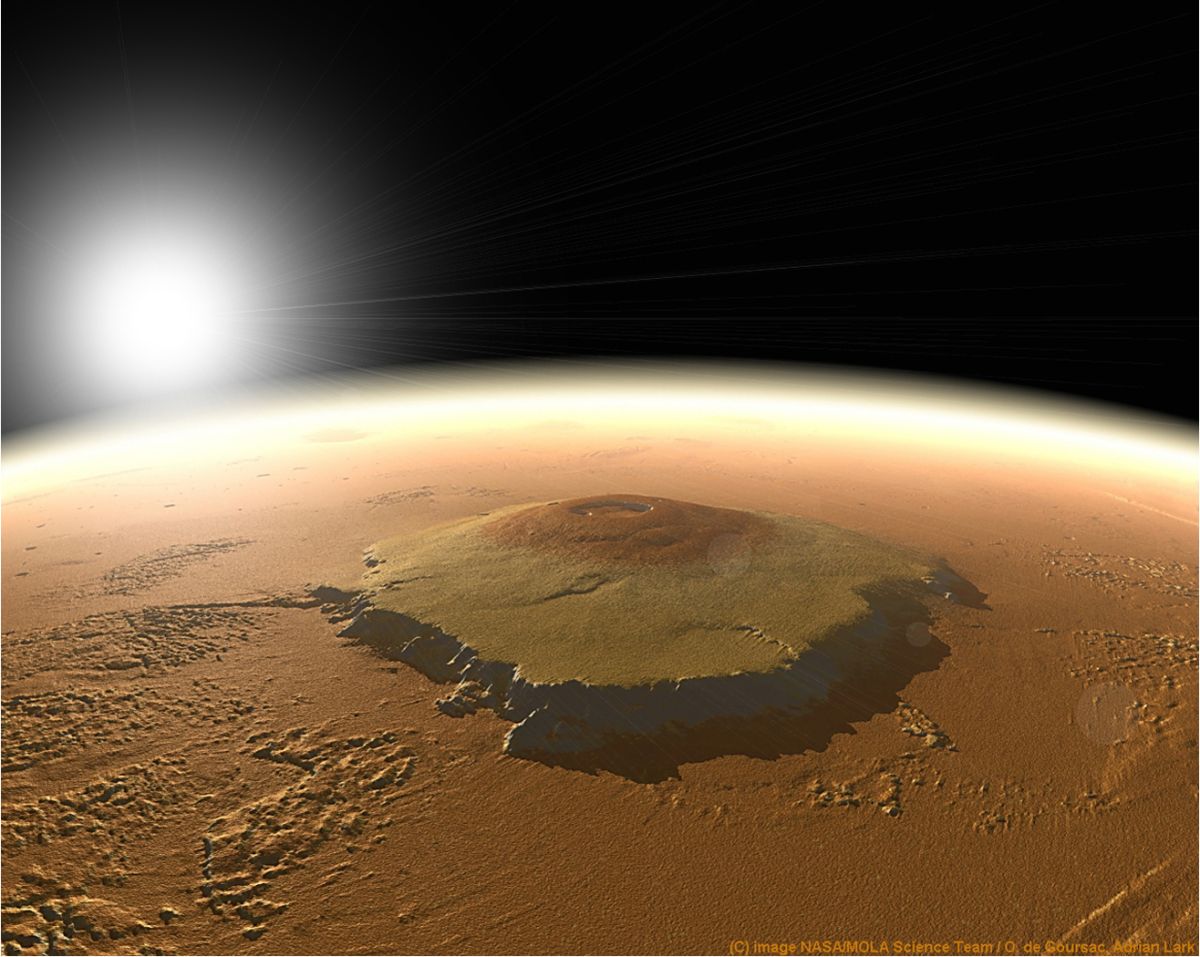As we gaze upon the majestic peaks of Earth – Everest, K2, Denali – it’s easy to feel dwarfed by their immense heights. However, there exists a mountain that surpasses them all, not by a small margin, but by an astronomical scale. Meet Olympus Mons, the largest volcano in our solar system, proudly standing on the surface of Mars.
Rising to a staggering height of approximately 22 kilometers (13.6 miles) and boasting a base diameter of around 600 kilometers (373 miles), Olympus Mons is a true giant among giants. To put its size into perspective, consider Mount Everest, Earth’s tallest peak, which stands at a mere 8.8 kilometers (5.5 miles) – nearly 2.5 times shorter than Olympus Mons. But it’s not just its height that’s impressive; the sheer scale of this Martian titan extends to its volume and area. Covering an area comparable to that of Arizona or Italy, Olympus Mons commands attention with its vastness.
This shield volcano shares characteristics with its earthly counterparts, such as the shield volcanoes found in the Hawaiian Islands, albeit on a much grander scale. Its massive proportions can be attributed to Mars’ unique geological conditions, notably the absence of plate tectonics. Without this geological activity, Olympus Mons has been able to accumulate layers of lava over millions of years without interruption, resulting in its colossal size.
At its summit lies a caldera stretching approximately 80 kilometers (50 miles) wide – a space large enough to comfortably accommodate the entirety of Paris. Such dimensions are a testament to the geological forces at play on the Martian surface.
If we were to transpose Olympus Mons onto Earth, its presence would not only overshadow our tallest peaks but also dramatically alter our planet’s geography and climate. Envisioned on a map of the United States, it would dominate a significant portion of the western states, offering a breathtaking and surreal spectacle.
In conclusion, Olympus Mons stands as a remarkable testament to the geological diversity of our solar system. Its monumental size and unique characteristics serve as a reminder of the awe-inspiring wonders waiting to be discovered beyond our own planet.















































